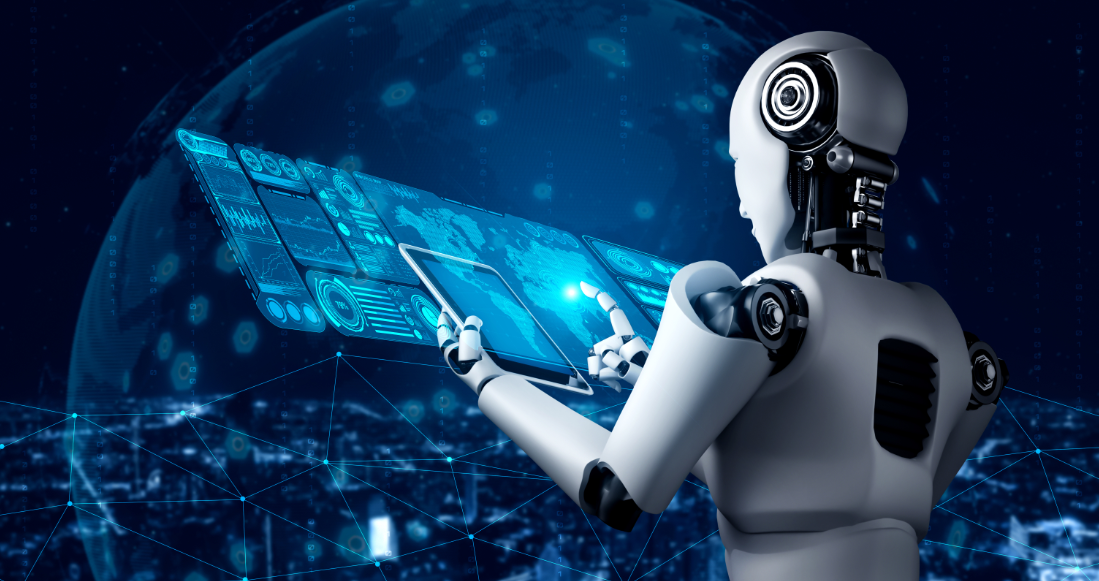Home >Technology peripherals >AI >Generative AI brings real-time supply chains closer to reality
Generative AI brings real-time supply chains closer to reality
- WBOYWBOYWBOYWBOYWBOYWBOYWBOYWBOYWBOYWBOYWBOYWBOYWBforward
- 2024-04-17 17:25:011453browse

Generative artificial intelligence is affecting or expected to affect many industries, and the time for the transformation of supply chain networks is ripe. Generative AI promises to significantly facilitate real-time interactions and information in the supply chain, from planning to procurement, manufacturing and fulfillment.
The impact of all these processes on productivity is significant. A new study from Accenture calculates that all working hours of end-to-end supply chain activities of more than 40% of enterprises (43%) may be affected by production artificial intelligence. In addition, 29% of the working time in the entire supply chain can be automated through production AI, while 14% of the working time in the entire supply chain can be significantly increased through production AI.
This emerging technology has potential for the entire supply chain, from design and planning, to sourcing and manufacturing, to fulfillment and service.
Overall, 58% of the 122 supply chain processes analyzed in the study were mature enough to be restructured through generative AI. The technology can serve as the missing link, helping bridge the gap between the linear supply chains of the past and the truly connected smart supply chain networks of the future.
Performance improvements can be seen from procurement and planning, to manufacturing and fulfillment, to sales and service. Capabilities that production AI brings to the supply chain include:
- #Providing contextual understanding: By deriving contextualization from large amounts of previously inaccessible unstructured data Insights to enhance forecasting and decision-making.
- Enable Conversations: Simplify access to insights and create new automation opportunities through user-friendly interactions with AI agents using everyday language.
- Design and Engineering: Generative AI can streamline the design process, using historical and external data sources to quickly generate new designs that meet specifications, reducing time and duplication of effort. Examples include generating new sustainable packaging designs.
- Planning: Through an easy-to-use interface, employees can query suggestions in everyday language and get explanations that are easy to understand and operate. Meanwhile, generative AI can be used to bring a wider range of unstructured data sources into predictive calculations, such as market reports, news results and social media. It can instantly summarize meeting action points, compare plans with actual results, build dashboards of key metrics, and even generate draft plans on its own.
- Procurement: Generative AI can provide procurement assistants to business users. When they need to buy something, the assistant can guide them into the right purchasing channel, support any cancellations or spot purchases, and contact a professional buyer to handle the purchase if needed. Additionally, the Accenture team noted that while teams often spend significant time on strategy alignment, sourcing, and data coordination, generative AI offers an opportunity to streamline operations, close information gaps, and improve access to a wider range of data sources, thereby enabling Faster insights and streamlined processes.
- Manufacturing: If companies can combine IT data with operational and engineering data, generative artificial intelligence will help them achieve consistent levels of quality and operational excellence in manufacturing operations, especially is in areas such as asset maintenance and provides employees with actionable, predictive insights. It can also provide new insights into product design and quality control.
- Quality Assurance: Artificial intelligence will also increasingly be used to enrich insights, accelerate diagnostics and root cause analysis of operational digital twins. The combination of classical and generative AI promises to significantly simplify access to predictive maintenance insights, real-time data analysis and fault diagnosis by making information more accessible through an easy-to-use question-and-answer interface.
- Enablement: This includes enhancing hyper-personalized customer experiences and extracting new revenue opportunities from insights based on vast amounts of omnichannel data. Delivery operators can also use generative AI to come up with ways to optimize transportation management and improve forecasting by considering a wider range of factors in unstructured information, such as weather forecasts and competitor activity.
- Manage Regulatory Forms: The AI-powered generative import and export document generator can transform the shipping and export process. Generative AI can be applied to the comprehensive collection of multimodal unstructured information in a variety of formats, including PDFs and tablets, including historical internal records and government regulations. Shipping and export documents can then be automatically populated for review and verification by human experts, reducing the chance of errors while saving time and labor.
Summary
Embedding artificial intelligence in the supply chain is not just a technology project, it requires a profound shift in the way organizations think about creating value and getting work done. . This means that production AI is not just the latest in a series of software implementations, but an enterprise transformation with a clear focus on end-to-end business capabilities and a focus on areas such as data, people, ways of working, processes and responsible adoption. Influence.
In the process, artificial intelligence-driven reshaping helps to strengthen the gap between the linear supply chain of the past and the truly connected smart supply chain network of the future.
The above is the detailed content of Generative AI brings real-time supply chains closer to reality. For more information, please follow other related articles on the PHP Chinese website!
Related articles
See more- What does python artificial intelligence mean?
- What are the main directions of application of artificial intelligence in the medical field?
- What is the relationship between artificial intelligence, machine learning, and deep learning?
- How to troubleshoot SolarWinds supply chain APT attacks with one click
- What is the difference between Apple mac air and pro

